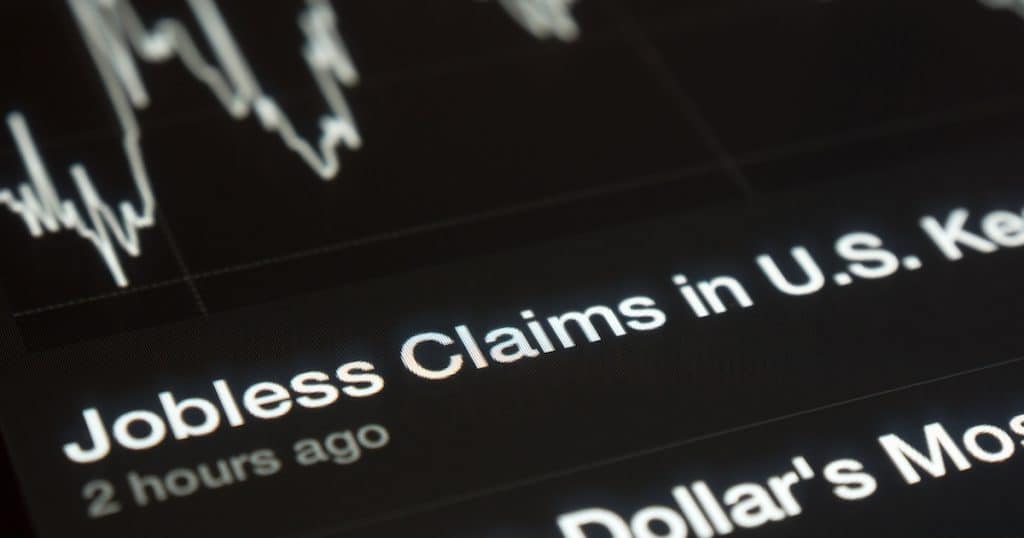

While weekly jobless claims still remain well below the 300,000-threshold for a strong labor market, climbs have been steadily rising over the month.
| Indicator | Prior | Prior Revised | Consensus Forecast | Forecast Range | Result |
| New Claims – Level | 216 K | 217 K | 218 K | 213 K to 222 K | 227 K |
The Labor Department (DOL) reported initial jobless claims came in at a seasonally-adjusted 227,000 for the week ending June 22, up 10,000 and higher than the forecast. Last week was revised higher by 1,000 to 217,000.
The 4-week moving average gained 2,250 to 221,250. The previous week’s average was revised up by 250 from 218,750 to 219,000.
Still, the advance seasonally adjusted insured unemployment rate was unchanged at a very low 1.2% for the week ending June 15. The advance number for seasonally adjusted insured unemployment during the week ending June 15 rose 22,000 to 1,688,000.
No state was triggered “on” the Extended Benefits program during the week ending June 8.
The highest insured unemployment rates in the week ending June 8 were in Alaska (2.0), New Jersey (1.9), Puerto Rico (1.9), California (1.8), Connecticut (1.7), Pennsylvania (1.6), Illinois (1.4), Massachusetts (1.4), and Rhode Island (1.4).
The largest increases in initial claims for the week ending June 15 were in Pennsylvania (+2,184), Wisconsin (+841), Connecticut (+563), Delaware (+442), and Rhode Island (+405), while the largest decreases were in California (-2,535), Illinois (-1,745), New York (-1,704), Ohio (-1,365), and Arkansas (-1,313).
The most damning journalistic sin committed by the media during the era of Russia collusion…
The first ecological study finds mask mandates were not effective at slowing the spread of…
On "What Are the Odds?" Monday, Robert Barnes and Rich Baris note how big tech…
On "What Are the Odds?" Monday, Robert Barnes and Rich Baris discuss why America First…
Personal income fell $1,516.6 billion (7.1%) in February, roughly the consensus forecast, while consumer spending…
Research finds those previously infected by or vaccinated against SARS-CoV-2 are not at risk of…
This website uses cookies.